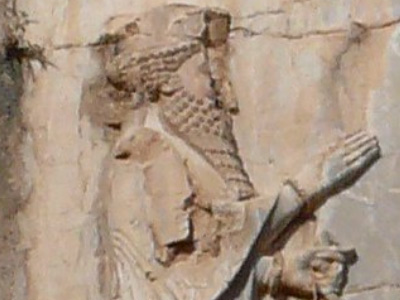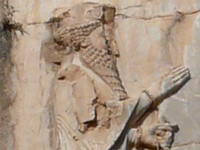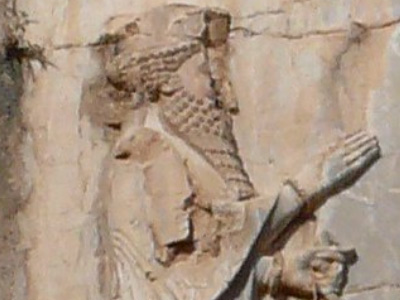Battle of Artemisium (480 BC)

Aftermath
The Persians were alerted to the withdrawal of the Greeks by a boat from Histiaea, but did not at first believe it. They sent some ships to see if this was the case, and finding that it was, the whole fleet set sail for Artemisium in the morning. The Persians then sailed on to Histiaea and sacked the surrounding region.
The Allied fleet sailed to Salamis, off the coast of Attica, to assist with the evacuation of the remaining Athenians. En route, Themistocles left inscriptions addressed to the Ionian Greek crews of the Persian fleet on all springs of water that they might stop at, asking them to defect to the Allied cause:
"Men of Ionia, that what you are doing is not proper, campaigning against your fathers and wishing to enslave Greece. It would be best if you came on our side. But if this is not possible, at least during the battle stand aside and also beg the Carians to do the same with you. But if you can not do either the one or the other, if you are chained by higher force and you can not defect during the operations, when we come at hand, act purposely as cowards remembering that we are of the same blood and that the first cause of animosity with the barbarians came from you."
Following Thermopylae, the Persian army burned and sacked the Boeotian cities that had not submitted to them—Plataea and Thespiae—and then marched on the now evacuated city of Athens. Meanwhile, the Allies (for the most part Peloponnesian) prepared to defend the Isthmus of Corinth, demolishing the single road that led through it, and building a wall across it. As at Thermopylae, to make this an effective strategy required the Allied navy to stage a simultaneous blockade, barring the passage of the Persian navy across the Saronic Gulf, so that troops could not be landed directly on the Peloponnese. However, instead of a mere blockade, Themistocles persuaded the Allies to seek a decisive victory against the Persian fleet. Luring the Persian navy into the Straits of Salamis in September, the Allied fleet was able to destroy much of the Persian fleet, which essentially ended the threat to the Peloponnese.
Fearing that the Greeks might attack the bridges across the Hellespont and trap his army in Europe, Xerxes retreated with much of the army back to Asia. He left a hand picked force under Mardonius to complete the conquest the following year. However, under pressure from the Athenians, the Peloponnesian Allies eventually agreed to try to force Mardonius to battle, and marched on Attica. Mardonius retreated to Boeotia to lure the Greeks into open terrain and the two sides eventually met near the city of Plataea. There, at the Battle of Plataea in August 479 BC, the Greek army won a decisive victory, destroying much of the Persian army, and ending the invasion of Greece. Meanwhile, at the near-simultaneous naval Battle of Mycale the Greeks destroyed much of the remaining Persian fleet, thereby reducing the threat of further invasions.
Significance
Considered by itself, Artemisium was a relatively insignificant battle. The Allies did not defeat the Persian navy, nor prevent it from advancing further along the coast of Greece. Conversely, neither did the Persians destroy the Greek fleet, nor irreparably weaken it. The battle was thus an indecisive one, which pleased neither side.
Nevertheless, in the wider context of the Greco-Persian wars, it was a very significant battle for the Allies. The Allies had demonstrated to themselves that they could stand up to the Persian navy, even having the better of some encounters. For many of the Allied crews, it was their first taste of battle, and the experience gained was invaluable at the forthcoming Battle of Salamis. Moreover, fighting the Persians at Artemisium allowed the Greek admirals to see how the Persian fleet performed, and gave them insights into how it might be beaten. In addition, the events before and during Artemisium were crucial in cutting down the size of the Persian fleet (even if this was not all due to military action), meaning that the odds faced by the Allies at the Battle of Salamis were not overwhelming. As the poet Pindar put it, Artemisium was "where the sons of the Athenians laid the shining foundation-stone of freedom".
HISTORY

RESOURCES
This article uses material from the Wikipedia article "Battle of Artemisium (480 BC)", which is released under the Creative Commons Attribution-Share-Alike License 3.0.
© Stories Preschool. All Rights Reserved.









